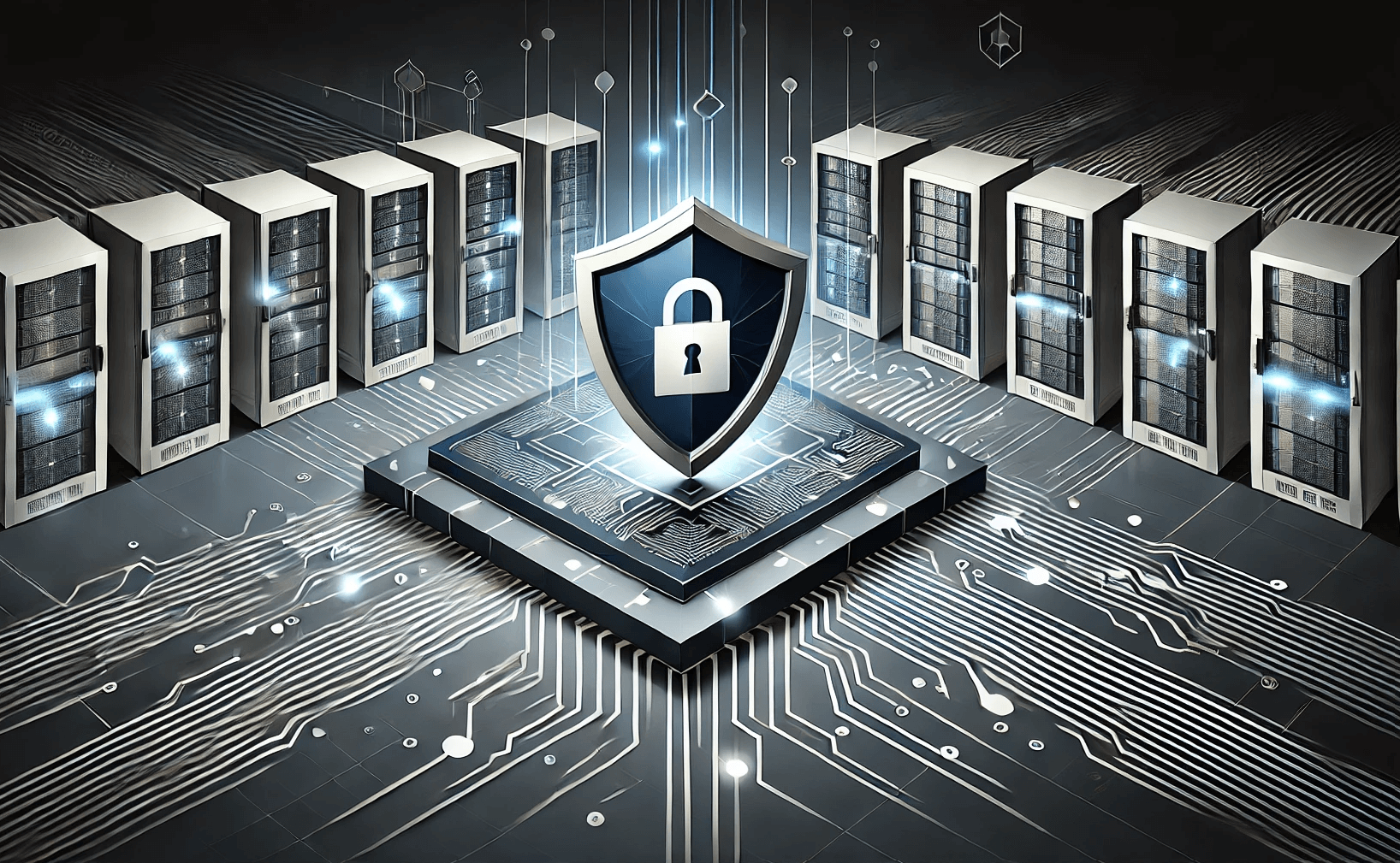In an increasingly data-driven world, ensuring the safety and availability of information is more critical than ever. However, many people confuse the terms “data protection” and “data security,” though they address different aspects of safeguarding information. Understanding the distinction between these two concepts is essential for creating a robust strategy that minimizes risks and ensures both recovery and defense. Let’s first explore each concept individually, and then compare them to understand the key differences between them.
What is Data Protection?
Data protection refers to the processes, technologies, and strategies designed to ensure the availability, integrity, and recoverability of data in the event of accidental deletion, corruption, hardware failure, or any other form of data loss. The primary goal is to preserve the data so that it remains accessible and usable when needed, ensuring that critical information can be restored to its original state after an incident. Effective data protection involves safeguarding data throughout its lifecycle by implementing techniques such as backup, replication, and redundancy, which ensure that data can be recovered quickly and efficiently, regardless of the disruption.
Key Practices for Data Protection
1. Backup
Backup is the practice of regularly creating copies of data and storing them separately from the original source. These backups can be restored to recover data after incidents like accidental deletion, data corruption, or system crashes. By retaining multiple copies over time, businesses can retrieve data from different points, ensuring minimal data loss when issues arise.
2. Snapshots
Snapshots capture the state of a dataset or system at a specific point in time. Unlike backups, which are full copies, snapshots allow for quick restoration of data by rolling back to an earlier state. They are particularly useful for short-term recovery after accidental changes, deletions, or software errors, allowing rapid recovery without a full system restore.
3. Continuous Data Protection (CDP)
Continuous Data Protection (CDP) continuously tracks data changes in real-time or near real-time, capturing every version of the data. Unlike traditional backups that are taken at intervals, CDP allows restoration to any specific point in time, minimizing the window of potential data loss.
4. RAID (Redundant Array of Independent Disks)
RAID is a data storage technology that distributes data across multiple physical disks to ensure redundancy and fault tolerance. RAID 1 mirrors data on two or more disks for immediate failover, while RAID 5 and RAID 6 distribute data and parity across multiple disks, allowing for recovery even in the event of one (or two in RAID 6) disk failures. RAID ensures continuous data availability, especially in environments that require high reliability.
5. Replication
Replication involves copying data across multiple systems or locations to ensure it remains available in the event of a failure. Synchronous mirroring copies data in real-time, often within the same site or across metro distances, ensuring immediate failover with zero data loss. Asynchronous replication works over longer distances, such as between geographically separated sites, offering disaster recovery capabilities by maintaining up-to-date copies of data at a remote location.
6. Erasure Coding (EC)
Erasure coding is a data protection method used primarily in distributed storage environments. It works by dividing data into fragments, expanding it with redundant data pieces, and distributing the fragments across multiple locations. This method allows data to be reconstructed even if some fragments are lost or corrupted, making it a highly efficient and robust solution for protecting large volumes of data across various nodes or data centers.
In addition to the core data protection techniques like backup, snapshots, RAID, and replication, organizations often employ other advanced strategies to enhance their data protection capabilities. Immutability and WORM (Write Once, Read Many) storage ensure that once data is written, it cannot be altered or deleted, safeguarding against tampering and accidental changes. Versioning allows organizations to retain multiple versions of data, making it possible to revert to previous states if needed. Data integrity checks, such as checksums and hashing, help ensure that the data remains consistent and uncorrupted throughout its lifecycle. By integrating these additional measures, businesses can further strengthen their data protection strategies, ensuring data remains secure, intact, and recoverable no matter the circumstances.

What is Data Security?
Data security refers to the methods, technologies, and processes put in place to protect data from unauthorized access, theft, and malicious attacks. It is focused on safeguarding the confidentiality, integrity, and availability (CIA) of data by preventing breaches, mitigating risks, and ensuring that sensitive information is only accessible to authorized individuals. Effective data security measures include encryption, access control, and real-time monitoring. Incident response is a critical aspect of data security, which ensures that when a breach or attack occurs, organizations can quickly detect, contain, and address the issue to minimize damage.
Key Practices for Data Security
1. Encryption
Encryption involves converting data into a secure, unreadable format that can only be decoded by someone with the correct decryption key. It ensures that even if unauthorized parties gain access to data, they are unable to read or misuse it. Encryption is essential for protecting sensitive information, both during transmission and while stored on devices or in databases.
2. Access Control (RBAC, MFA)
3. Intrusion Detection and Prevention Systems (IDPS)IDPS monitor network traffic and system activity for suspicious behavior, identifying potential threats like malware, hacking attempts, or abnormal patterns. They can either detect threats (IDS) or actively prevent them (IPS) by blocking malicious traffic. This is a key component in early detection and quick response to security incidents.
4. Data Loss Prevention (DLP)
Data Loss Prevention technologies monitor and protect sensitive data to prevent unauthorized sharing, leakage, or transfer. DLP tools ensure that data, whether at rest, in motion, or in use, does not leave the organization or reach unauthorized individuals. It helps in safeguarding intellectual property, financial data, and personally identifiable information (PII).
5. Antivirus/Antimalware
Antivirus and antimalware software protect systems from malicious software, including viruses, ransomware, spyware, and trojans. These tools detect and remove malicious code before it can cause harm, and they regularly scan for and mitigate new threats as they emerge.
6. Security Information and Event Management (SIEM)
SIEM systems provide real-time analysis of security alerts and events generated by applications and network hardware. SIEM tools collect and aggregate data from various sources to detect suspicious activities, enabling faster incident detection, response, and reporting. They are vital for monitoring complex environments and managing threats in real-time.
Data security is an ever-evolving landscape where organizations must continually adapt to new threats. Beyond the core techniques, businesses are leveraging holistic strategies that incorporate proactive monitoring, automated threat detection, and comprehensive response plans. By integrating these tools and practices, companies can better safeguard sensitive information, prevent data breaches, and ensure compliance with regulatory standards. Effective data security requires a layered approach, combining technology, processes, and awareness to mitigate risks and respond swiftly to incidents.

Differences Between Data Protection and Data Security
Although Data Protection and Data Security are closely related, they address different challenges within data management. Data protection focuses on ensuring data remains recoverable and intact in the face of accidental loss, corruption, or system failures. In contrast, data security is primarily concerned with safeguarding data from unauthorized access, theft, or cyberattacks. While data protection ensures data can be restored after an incident, data security aims to prevent the incident from happening in the first place. Together, they form a comprehensive approach, with one strengthening the other to create a robust data management and protection strategy.
| Factor | Schutz Ihrer Daten | Data Security |
|---|---|---|
| Primary Focus | Ensuring data is recoverable, available, and intact | Preventing unauthorized access and data breaches |
| Threats Addressed | Accidental deletion, hardware failure, data corruption | Hacking, malware, phishing, insider threats |
| Key Techniques | Backup, snapshots, RAID, replication, erasure coding | Encryption, RBAC, MFA, firewalls, IDS, IPS, SIEM |
| Scope | Preserving data over time and ensuring recoverability | Protecting data from being accessed or stolen |
| Role in Compliance | Ensures data is retained and recoverable as required | Ensures data privacy and security per regulations |
| Impact on Availability | Ensures quick data recovery during failures | Ensures data is not compromised, preventing breaches |
| Time Sensitivity | Response during recovery can vary depending on needs | Immediate response is critical to prevent data theft |
| Preventative vs. Reactive | Primarily reactive, focused on recovery | Primarily preventative, focused on preventing attacks |
How DataCore Can Help
DataCore delivers a robust platform designed to seamlessly integrate both data protection and data security into your organization’s infrastructure. With a focus on maximizing data availability, resilience, and security, DataCore helps you maintain control over your most valuable asset—your data. Whether it’s ensuring that your information is protected from unforeseen disruptions or safeguarding against potential security threats, DataCore’s flexible and scalable solutions adapt to meet the unique needs of your business.
By combining data protection and security with advanced data management capabilities, DataCore empowers organizations to confidently manage their data lifecycle, enabling uninterrupted access, safeguarding sensitive information, and ensuring operational continuity. With DataCore, you gain the assurance that your data is both protected and secure, no matter the challenges you face.